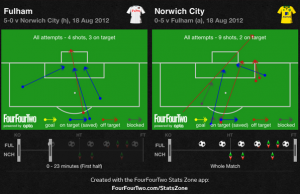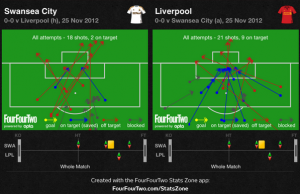Guest Article by Jonny Grossmark from www.sotdoc.co.uk
Many of you may have seen the movie (or read the book) Moneyball. The story charts Oakland A’s general manager Billy Beane’s attempt to put together a baseball club on a budget by employing computer-generated analysis, getting the most out of what were considered to be very average players.
Can we transfer the idea of computer-generated analysis to our betting decisions?
There are a few hundred betting websites, and many of them will have thousands of clients. Everyone wants to be a winner and so people will tend to subscribe to the tipsters that they perceive to be the best.
The media industry has also caught up with the idea that people want to “know more, enjoy more, and share more” in terms of their betting experience and bookmakers have been advised that their target audience is open to what I describe as “bet stimulation”. The online in-running betting market has increased in volume dramatically since a company called Bettorlogic started to supply data to the industry.
Here is an example for the Norwich v Wigan game.
Norwich have scored first in 5/8 home matches against bottom-six teams. There have been +2.5 goals in 15/20 Wigan away matches.
As the data flashes up during a game it stimulates our brains to “trigger” a bet as we become confident that we have information that will give us an edge.
Bookmakers have gone even further by having actors appear at half-time advising you to consider backing the 1-3 scoreline in a game at 14/1. In one particular game I checked the probability of Real Madrid winning 3-1 as they were 1-0 up away at HT and I discovered that Real Madrid and Barcelona had only won once each away FT 3-1 when winning away at HT 1-0 in the last 4 seasons.
The bookmakers are using data to give them an edge over the punter by providing really poor value “trigger” bets.
The next thing to look at is random behavior. If I put £10 on black and win, and then put £10 on black again, my chance of winning has no relationship with my previous bet. This is in fact what happens to many people when they bet. The strategy of joining trends and leaving them as a bet loses and then backing Liverpool because they do not lose on a Friday will lead to long term losses unless you are the lucky chap who recently won £180 000 for predicting 4 correct scores with an initial stake of £11
Bookmakers have an edge so is it possible for us to have an edge?
Let us look at Man Utd and their shots on target data at home. Do you think it will be consistent or inconsistent depending on the type of team they are up against.
As I write I am opening up my database and I can see this season that the number reads 7 5 7 7 7 6 7 7 and I welcome you to check who the away teams were. This is certainly not a random event.
In every game this season at home Man Utd have had between 5-7 shots on target, which is a very narrow range. However, goals to shots-on-target ratios are not consistent and vary game to game.
Patterns
We can, though, look at the shots-on-target data, much like the general manager in Moneyball, to see any patterns forming that will define what we are looking for: expectation of a goal.
Have a look at Fulham v Norwich and we see that there was a cluster of shots on target before the first Fulham goal.
Of course, not all games will fit that cluster pattern.
See if you can predict expectation of goals. I was looking at the Norwich game at Swansea the shot on target data and suspected that Norwich would score very soon, which they did 60 seconds later.
Say Liverpool in real time at Swansea have had 6 shots on target after 80 minutes. You check your spreadsheet and see the average 0-0 is far lower then that so you trigger a LAY bet of the correct score ie 0-0 in anticipation of the goal which in this case did not arrive but there are a greater number of games where the goal will arrive.
You need to also look at accuracy prevention which is the ability of a team to stop the other team turning shots into shots on target which Stoke are past masters of.



